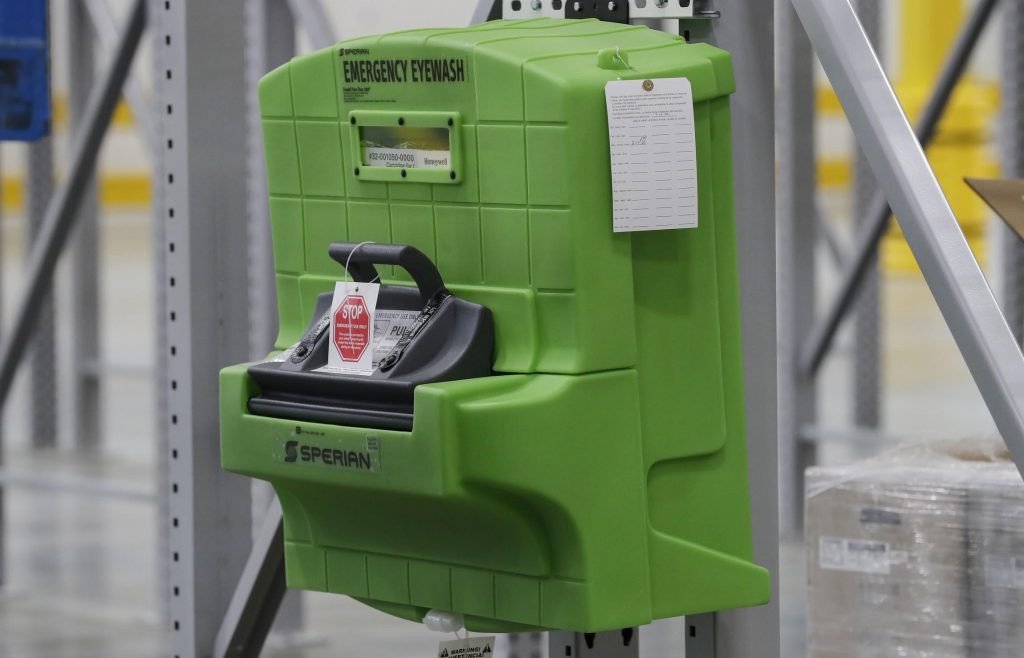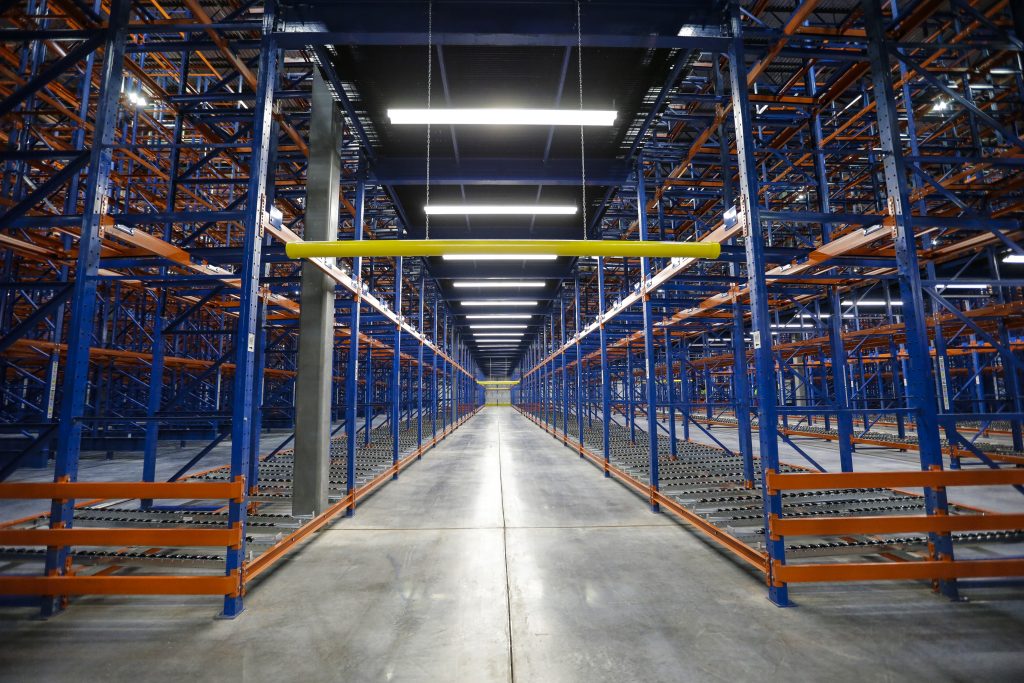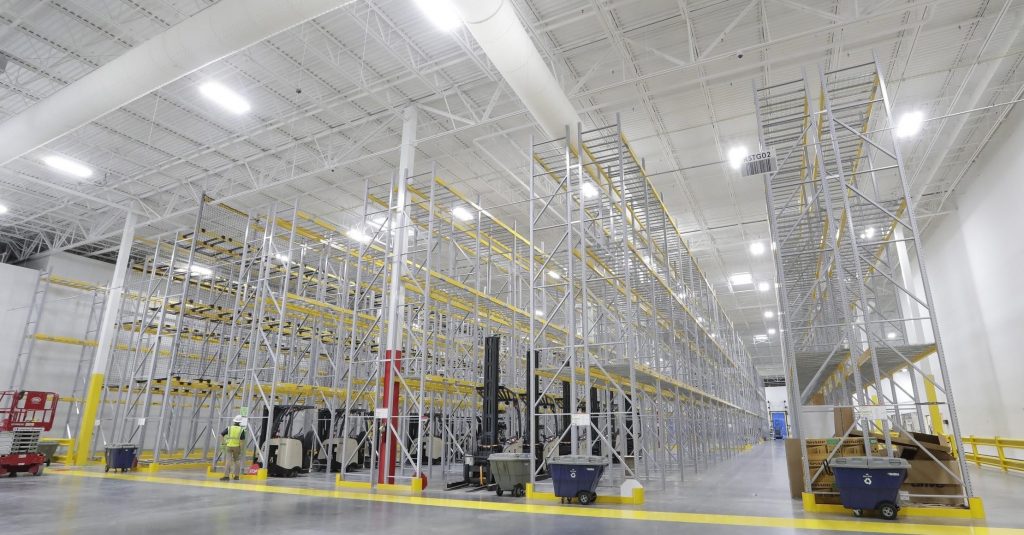
Working in a cold storage warehouse environment comes with its own unique set of safety concerns. It’s essential to understand the potential risks and best practices to keep your employees, equipment and products safe while safeguarding productivity.
According to global commercial real estate firm CBRE, the recent health crisis has only increased demand for freezer and cold storage warehouse space. These facilities had already seen a capacity growth of 43% since 2000. Projections continue to show strong demand into 2025 as buyers purchase more perishable food and grocers and producers shift resources to meet demand. In a rush to satisfy customer expectations, we must be diligent in the safe implementation and operation of these critical facilities.
Combined with the Occupational Safety and Health Administration (OSHA) safety guidance for cold storage facilities, the Apex team is here to provide a refresher course on safety tips and best practices.
1. Make Sure to Dress for the Occasion
Proper attire is vital in any high-risk work environment and cold storage is no exception. Ensure that your employees have approved cold-weather gloves and jacket, layered clothing, insulated and slip-proof footwear and other essential low-temperature garments.
2. Give Them Shelter
Even the most appropriately dressed employees need refuge from their persistently cold work environment. Make sure you have a warm break room set up with hot beverages like coffee and tea that your employees can enjoy during lunch and break periods to keep their body temperature up.
3. Keep Your Facility Clean and Maintained

Liquid spills can be more dangerous in below-freezing environments because of their potential to freeze and create slipping hazards. Keep your floors dry and regularly check for ice build-up in vulnerable parts of your facility. Make sure all workspaces are free of debris, dry and easily accessible. Consider dehumidifying systems to reduce the level of water vapor in the atmosphere. Ice build-up can be especially problematic on storage racks, ceilings and floors. It’s also especially important to make sure all electrical equipment is cleaned and maintained.
4. Guarantee Safety First, Last and Everywhere in Between

In any work environment, especially cold-storage warehouses, it’s critical to perform regular safety inspections. Start with an internal safety checklist to confirm that your employees and management are following all protocols regarding everything from pallet rack configuration and alignment to pest control. It’s a good idea to perform frequent inspections, so you’re ready for regularly scheduled compliance audits. Some items on the checklist should include:
- Assessment of slip hazards
- Audit of battery charge facilities
- Review of date and time of last inspection
- Evaluation of employee dress code adherence
- Proper employee break intervals
- Routine pallet rack safety & damage Inspection
- Suitable lighting and visibility
5- Implement Proper Employee Training
All employees should be trained on key safety aspects of cold-storage warehouse operation. The training should include how to spot condensation and ice build-up, cleaning and maintenance of key areas like battery and refrigerant stations and the functions of the machinery they operate within their area of your facility.

6. Schedule Routine Pallet Racking Safety Maintenance
Your warehouse team should perform routine visual rack inspections to assess load size, condensation build-up, damaged rack components and other potential racking hazards. Also, schedule comprehensive pallet rack inspections at least once per year and address damage areas immediately. Racking should be marked with safe load capacity plaques.
The Apex Rack Repair & Safety Program can help with two options – “Do It Yourself” using the Rack Repair Mobile App or Leave It to the PROs, which relies on certified Apex professionals to conduct your pallet rack inspection. Both options deliver a complete pallet rack damage assessment and a non-biased repair or replacement solution.
When designing your pallet rack layout with a cold storage facility, make sure to include adequate aisle width to avoid collisions, accidents and other potential damage. Also, consider adding rack protection to high-impact areas with column guards or other upright protection.
7. Make Sure Your Facility Is Properly Lit
Believe it or not, lighting makes a huge difference in cold-storage facilities. Sufficient light is imperative for the proper performance of tasks, identification of potential hazards and visibility of safety notices, particularly for those operating types of machinery. Ensure that all workspaces are properly lit and promptly address inadequate lighting.
8. Limit Employee Exposure Whenever Possible
Make sure your employees take frequent breaks, so they don’t spend prolonged periods in freezing or subzero temperatures. Employees should leave the facility immediately if they experience extreme drowsiness, loss of balance, excessive shivering or slower-than-normal breathing, as these are early signs of hypothermia. Additionally, lower temperatures can lead to delayed mental reactions and reduced dexterity, while bulky attire needed for warmth can make it hard to maneuver effectively.

Let Apex Help You Navigate the Cold Storage Warehouse Safety Landscape
Apex has spent years helping customers develop and implement safe, effective, cold-storage warehouse solutions. Contact us today so we can discuss your needs.

